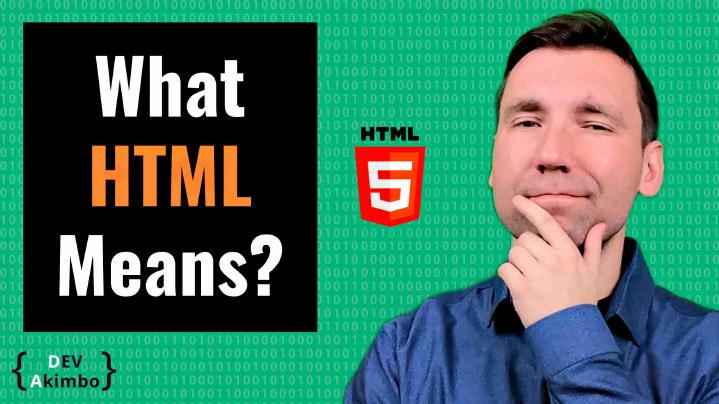
What HTML5 Means
HTML5 is probably the most basic concept for every web developer. But because some people keep asking what does it mean, I decided to write a post to answer this question.
What is HTML?
HTML is a shortcut from Hypertext Markup Language, but it doesn’t mean anything. What matters is that it’s a language used to define a structure of the web page.
HTML is something that we, as humans can understand and use it to make web pages. Internet browsers understand this notation as well. So thanks to HTML, humans and the machines may speak the same language.
HTML is used only for defining the structure of the web page, meta information and additional assets like inline scripts or stylesheets, or references to external ones.
We don’t use HTML to define what color or layout the web page will have. For this purpose, we use CSS, which stands for Cascading Style Sheets.
HTML web page is just a simple text document written in HTML syntax.
What is HTML5?
The HTML5 is a modern version of HTML, and it’s known as an HTML Living Standard, which means it’s keeps updated with new elements and features.
Why we need HTML5?
Well, before HTML5 was released, HTML didn’t have any standardized way to support embedded media formats like audio and video, which made many different vendors create their addons.
As a result, if a user wanted to watch a video in an internet browser, he had to install a plugin for a particular media player. It causes a lot of headaches and security holes.
The main internet browsers vendors, together with Google and World Wide Web Consortium - the institution responsible for maintaining the previous standard - decided to work together on the new standard, better suited for modern web needs.
HTML5 solved the problem of the media content and brought the collection of semantic tags that better describe the context they are used in, like an article, section, header, and footer.
The HTML5 specification is updated regularly, and internet browser vendors keep their browsers update as well. So we can use new features while building websites.
Can we skip the number “5” and just say “HTML”?
Technically we can, because HTML5 becomes the global standard for the web, and old HTML shouldn’t be used anymore, but because of legacy reasons, we need to pronounce the number as well, to avoid confusion.
You may ask what “legacy reasons” we are all using HTML5 now, right?
Not really, there are some creepy places where old HTML is still the status quo. I mean very, very creepy places, like old government institutions, which didn’t decide to update their internal websites or even external ones. Their employees still use old Internet Explorer 8 or earlier, on Windows XP… or earlier.
Simply nobody wants to take the responsibility of touching these old things. They are a hive of hornets, and it’s better to leave them as they are.
The best thing we can do about it is to avoid these places and pronounce HTML5 instead of HTML, to keep the beast inside its cave.
Conclusion
So here it is, a simple explanation of HTML and HTML5. But if HTML still sounds blurry to you or if you have any questions related to this post, leave the comment below.
If you found this post helpful, consider sharing it, so I will be motivated to publish more posts that will help you get the IT career you want.
See you next time, and as always, stay focused!

